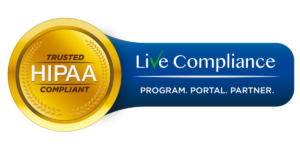Explore the transformative journey of healthcare through the lens of Remote Patient Monitoring (RPM). From the challenges of traditional healthcare to the promising landscape after RPM implementation, witness the paradigm shift in patient outcomes and hospital efficiencies. Discover the impactful statistics, burgeoning market trends, and future prospects of RPM in revolutionizing patient care. Join us on this insightful exploration of the before and after of healthcare with RPM.

Before Remote Patient Monitoring
- 56% Of US Healthcare Spending Attributed To Chronic Diseases.
- 1 In 7 Medicare Beneficiaries Readmitted Within 30 Days.
- Only 44% Of US Patients Actively Participate In Treatment Decisions.
- 70% Of Us Healthcare Data Remains Unused.
- US Healthcare Spending Reaches $4.3 Trillion Annually.
After Remote Patient Monitoring
- 68% Reduction In Hospital Admissions For Us Patients With Chronic Conditions On RPM.
- 19% Decline In 30-Day Readmission Rates In US Hospitals With RPM Implementation.
- 82% Of US Patients Report Increased Self-Management Confidence With RPM.
- Real-Time Data Integration Leads To 38% Faster Response Times To Patient Needs In US Healthcare Systems.
- $1,200-$2,400 Annual Cost Reduction Per Patient On RPM For Chronic Disease Management In US Hospitals.
Hospital Benefits:
- Saves US Hospitals $28 Billion Annually.
- Frees Up 15% Of Hospital Beds For Acute Care Patients.
- 87% Of US Hospitals Implementing RPM report Improved Patient Satisfaction Scores.
- Enables Remote Care Management, Reducing In-Person Consultations.
RPM Adoption In The US:
- Only 25% Of US hospitals Actively Utilize RPM programs.
- The RPM Market Is Expected To Reach $18.6 Billion In The US by 2027.
- Increased Reimbursement, Technological Advancements, And Growing Chronic Disease Burden.
Center Section:
- Icons Representing Chronic Disease Improvement In Diabetes, Heart Failure (Hospital Admissions Down 25%), And COPD (Exacerbations Down 15%)
- Wearables, Remote Monitoring Platforms, Telehealth Tools, Medication Adherence Trackers.
- Real-Time Vital Signs, Medication Adherence Trends, and Early Warning Signs For Complications.
- Self-Management Strategies, Education Resources, Personalized Care Plans.
Future Of RPM in The US:
- 75% Of Healthcare Organizations Plan To Invest In AI-Powered RPM Analytics By 2025.
- The US Wearable Device Market Expected To Reach $41.3 Billion By 2027
- The Remote Mental Health Monitoring Market Projected To Grow By 24.4% Annually In The US Through 2028.
